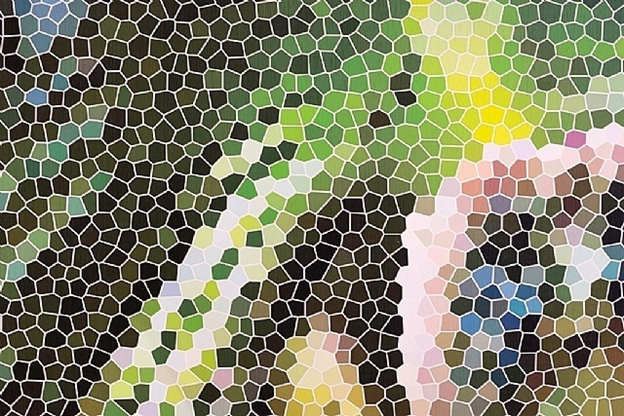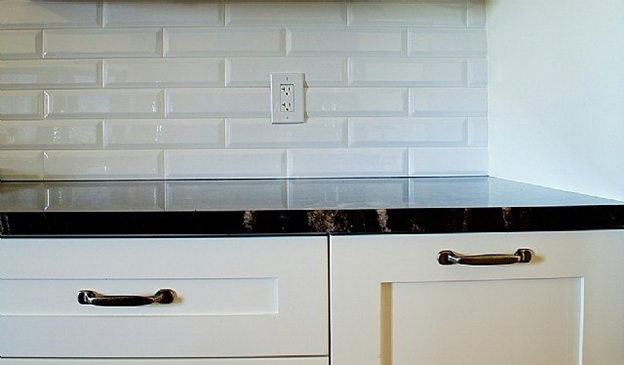How to select the best tiles for the floors, walls, and backsplashes in your home.
Can you pick the wrong tiles for a surface?
Yes! Absolutely!
As ubiquitous and common tiles are, many tiles are not appropriate for every surface. In this guide, you'll learn which tiles are suitable for certain surfaces, environments, and rooms. So, when it comes to tiling a shower, or installing floor tiles for your kitchen, be sure you know that you've chosen the appropriate product.
So, why are tiles so commonly used in the home?

It's because they can be made out of practically anything (clay, metal, glass, stone, and more); they can be economical; they can be tremendously durable; and they can make beautifully striking surfaces. But, the trick to using tiles properly is knowing a lot about the product. It's very easy to choose the wrong tile based on impulse and appearance.
You can tile pretty much any surface or room:
§ Bathroom
§ Backsplash
§ Ceiling
§ Countertop
§ Hallway
§ Kitchen
§ Patio
§ Shower
§ Wall
But, you can't just use any tile without considering traffic volume, traffic type, moisture in the room, stain susceptibility, and surface purpose. Some tiles work well for a backsplash but cannot be used on a floor because they are too delicate.
Although your contractor may know what types of tiles are appropriate for your project, it's always important to double check and make sure that you've made the right choice. Try your best not to set your heart on a product before you know whether it's suitable for your project (this goes for DIYers too!).

Tiles need not be laid as a grid! They can be made into a colourful mosaic abstract. Just remember: mosaics and small tiles are expensive to install.
Diverse Options
Tiles are diverse. This is a solution as much as it is an issue! Here's a breakdown of the most loved tile products on the market to date.
True linoleum tiles or rolls are made from organic and biodegradable materials. They are an eco-friendly choice!
Durability
People often say, "tiles are durable". This isn't necessarily true. Durability depends on material as well as finish!
Hardness
Ceramic tiles are measured by hardness (by the Mohs scale and The Porcelain Enamel Institute's class rating). The hardness of a tile will determine where what surface, and where a tile should be used. You can find out hardness based on the manufacturer's information on the box. Below is the hardness rating scale from The Porcelain Enamel Institute (PEI).
Tiles are rated on their moisture resistance (porosity), or how much water fills up tiny spaces in the material. Believe it or not, but all (if not most) tiles are porous!
Porosity level will indicate what type of environment the tile will work best in. For example, a very porous (non-vitreous) tile such as terracotta is not good for a shower stall. Terracotta absorbs a significant amount of water, which can damage drywall, joists, and subfloor. Thus, it's best to use vitreous or impervious materials within a shower stall.
Terra cotta tiles are beautiful. But, they are extremely delicate. Buyer beware!
|
Level of porosity (least to most) |
Material examples |
Suitable for |
|
Non-vitreous (absorbs more than 7% water) |
Terra cotta |
Vertical use, backsplashes in dry areas (indoor use only). |
|
Semi-vitreous (absorbs between 7% - 5% water) |
Some indoor ceramic and porcelain tiles |
Vertical uses such as back splashes, and some surfaces (indoor use only). |
|
Vitreous (absorbs between 0.5% - 0.3% water) |
Polished marble, some ceramics, Travertine (honed and filled), some porcelain. |
Surfaces and floors (mostly indoor use, can be used outside) |
|
Impervious (absorbs 0.5% or less water) |
Dense porcelain (some types), glass. |
Any surface, indoor and outdoor use |
About the Grout
Grout is a necessary part of most tiling projects—unless you choose peel and stick tiles. There are two types of grout: epoxy and cement. All grout keeps tiles together and sealed to a surface. However, these products are vastly from one another.
Cement grout:
Cement grout is a combinations of Portland grout with some other fillers. Unsanded grout is appropriate for smaller, narrower tile joints (under 1/8th an inch). Sanded grout is appropriate for larger, wider tile joints (above 1/8th inch). If used in the wrong context, Portland, grout can crack, shrink, and chip.
Cement grout is not waterproof and has a tendency to stain. One go-to solution is sealing the grout. There are two types of sealants:
§ Membrane sealants are applied as a coating atop cement grout. These sealants tend to peel under significant moisture exposure.
§ Penetrating sealants tend to be more durable, and are usually favoured for wet conditions.
Cement grout is easier to work with, and can be handled by DIYers. It is a cheaper option than epoxy grout. It can be easily removed for a future renovation.
Epoxy grout:
This grout is made with epoxy resin and fillers. It is waterproof and does not stain. It is much more difficult to handle in comparison to cement grout. Thus, it's recommended that you find a professional to install it. Epoxy grouts are more expensive than cement grouts. They tend to be more difficult to remove when the time comes.
Colour
Don't forget, grout comes in a variety of colours! Keep the following in mind:
§ Darker colours will hide stains much better than white or light colours.
§ Coloured grout will create the appearance of a frame around the tiles, which will bring a whole new pattern to a surface. Choosing similarly coloured grout to tile will preserve a smooth, even appearance. Grout colour will draw more (or less) attention to the surface within the room.
There are brightly coloured grouts on today's market. Do your research and don't be afraid to try something new.
Final Things to Consider
- Don't forget that tiles (including the compound beneath them) vary in thickness. Factor in extra space for trim, baseboards, door height, and countertops.
- The golden rule of tiling is to use big tiles for big spaces, and small tiles for small spaces. Of course, you can experiment!
- Floors must always be properly leveled. Bathroom floors must also take grading into account for proper water drainage.
- Tiling may seem like easy and fun job, but it may be more complicated than it looks. Wall tiling can also be strenuous on the back.
- Tiles are a great option to lay atop most existing flooring except carpet.



















Your Message